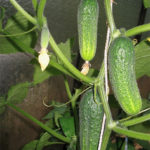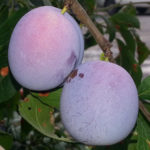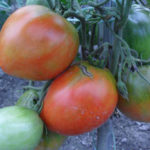Alvar potato variety
Alvara is a medium early potato variety (Solanum tuberosum) of German selection. Bred by employees of Saatzucht fritz lange KG at the end of the 90s. In 1999 he was included in the state register of plants of the Russian Federation. Approved for cultivation in two regions of the country: North-West (Vologda, Kaliningrad, Kostroma, Leningrad, Novgorod, Pskov, Tver, Yaroslavl regions) and North Caucasian (Republics of Adygea, Dagestan, Ingushetia, Kabardino-Balkaria, Krasnodar Territory, Rostov Region , North Ossetia-Alania, Stavropol Territory, Chechen Republic, Crimea). Suitable for most other regions of Russia, as well as Ukraine. Differs in high productivity, resistance to drought and degeneration. It is considered one of the best European red-leather varieties. Suitable for making chips.
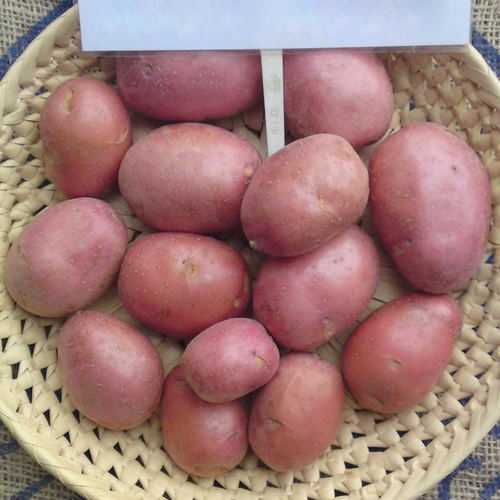
From the appearance of full shoots to ripening, 80-90 days pass.
The plant is tall, of an intermediate type. The main stem of the potato is erect or semi-erect. Alvara's leaves are small or medium, green in color from light to dark shades. The leaf is medium in size. Low intensity waviness is observed along the edges of the sheet plate. The flowers are medium-sized, collected in small or medium-sized corollas of red-violet color.
The root system is quite well developed, about 8-14 very large aligned tubers can form on one plant. They have an oval regular shape, the average weight of commercial copies ranges from 90-104 grams. The peel is red, smooth to the touch. The pulp is light yellow, does not darken when cooked and cut. The eyes are small, superficial, almost invisible.
According to the results of state tests, the marketable yield was recorded at around 295 c / ha, at the level of indicators of the variety Nevsky... The largest amount was harvested in the Kaliningrad region - 440 c / ha, 122 c / ha higher than the established standard. According to some information, it is possible to obtain more than 500 centners of potatoes per hectare of area, that is, about 500 kg per one hundred square meters. The marketability of tubers is 81-90%, which is comparable to the standards, keeping quality is 90%.
Taste is very good, Alvara is suitable for preparing absolutely any dish. Experts rated its taste at 4.8 points on a five-point scale. The tubers are medium boiled, do not lose their color when finished and look appetizing. Our hero received the greatest distribution in large processing factories. Due to the rather high starch content (12.8-14.1%), it is actively used for the manufacture of chips, crackers, as well as starch and freeze-dried puree.

The variety is undemanding to soils and climate, it can grow in almost all regions of Russia. However, plants show better yields in fertile soils rich in both nutrients and minerals. In care, this potato is unpretentious, but responds well to standard agrotechnical measures, and especially fertilization. Let's talk in more detail about the intricacies of growing in the list below.
- It is strongly recommended to germinate the tubers before planting. They have a pronounced dormant period, therefore, if this is not done, germination may deteriorate, and the ripening period may increase.
- The planting depth is standard - about 8 cm on light soils, on heavy soils - less. The distance between the holes is 35 cm, between the rows - 70 cm.
- During the growing season of plants, do not neglect hilling, loosening, weeding, preventive treatments against diseases and pests. Don't forget about watering. Although Alvara is drought-resistant, a long lack of moisture will be disastrous for her.
- Plants respond very well to uniform fertilization of the soil. Provide your plantings with organic and mineral fertilizers as needed. Just do not get carried away with nitrogen fertilizers - before flowering, they can be applied in standard doses, but after the buds appear, it is better to reduce the dosage or stop feeding altogether.An excessive amount of nitrogen compounds in the soil can lead to a slowdown in the formation of tubers, while the tops will grow at full strength.
- Don't forget about crop rotation. According to some reports, the variety can be affected by late blight, so it is dangerous to plant it in the area where the nightshade grew before it. The best precursors for potatoes will be cabbage, zucchini, onions, cucumbers, garlic, legumes, siderates.
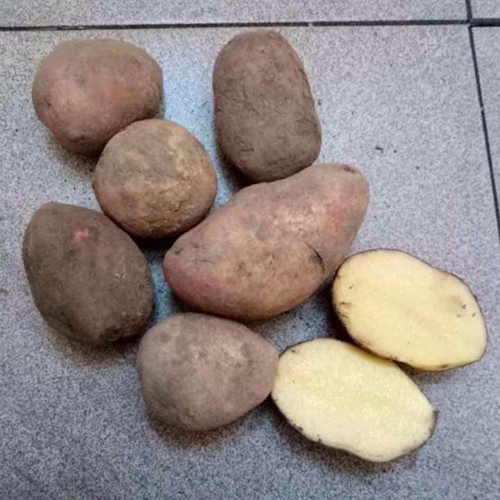
Alvara is resistant to various viruses, cancer, golden cyst nematode, scab. According to the originator, it has medium resistance to the late blight pathogen in terms of tops and tubers.
Our hero has long been known to a wide circle of gardeners and large agricultural firms, so he managed to earn many positive reviews. It is especially appreciated for its very good yield, excellent taste, excellent presentation of tubers and their excellent keeping quality, unpretentious care, undemanding to soils, as well as nematode resistance. To this large list of advantages, it is imperative to include resistance to degeneration, due to which the seed material will have to be renewed very rarely.
But the disadvantages are also worth mentioning. The main one is the average resistance to late blight, that is, in unfavorable seasons and with agrotechnical errors, the variety is likely to be affected by late blight. However, this problem can be solved by timely preventive treatments and compliance with crop rotation on the site. There are also reviews that the variety ripens rather late and does not justify its stated mid-early dates. But this nuance is highly dependent on the climatic conditions of the region and the correct agricultural technology. In short, Alvara is a very good, reliable, time-tested potato that clearly deserves a place on your site!
Cultivation in Russia is officially carried out by: HALL "Oktyabrskoye" and CJSC "Pedigree plant" Prinevskoye "in the Leningrad region. LLC FH" Sedek "in the Moscow region.


